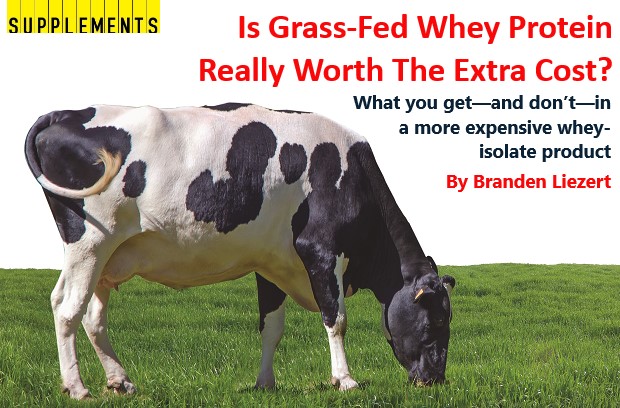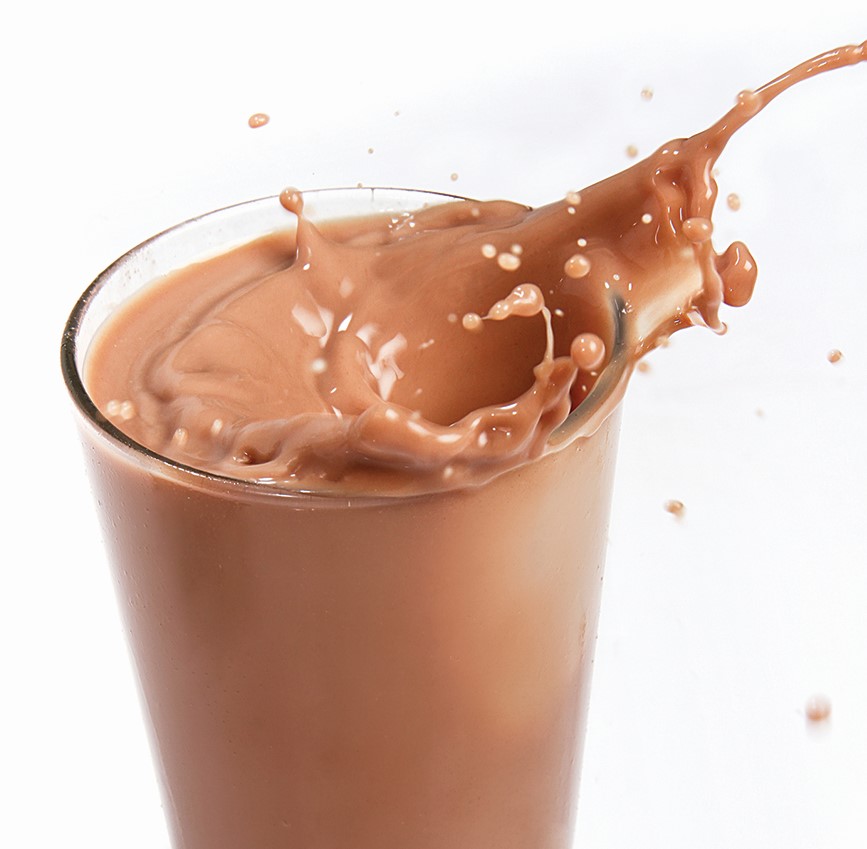Is Grass-Fed Whey Protein Really Worth the Extra Cost?

What you get—and don’t—in a more expensive whey-isolate product
No doubt, a protein supplement is a must-have if you’re looking to achieve your greatest potential in building muscle long term. It’s well known that protein powders are helpful in building muscle, especially in conjunction with a solid diet. Protein is the one supplement that has been a staple in bodybuilding diets for decades. Whey protein in particular is extremely bioavailable, has a tremendous amino-acid profile, is very convenient, and hosts many additional benefits.
If you’re conscious of the quality of the foods you consume, you’re probably aware of a new breed of whey protein that comes from grass-fed cows. The benefits it offers come at a price, however, and that higher cost may be the tipping point that turns you away.
Research can be used to make arguments for and against grass-fed whey, but in reality, it simply hasn’t been around long enough to make a final, definitive conclusion. For now, however, let’s look at some factors you should consider before digging deeper into your wallet.
As with traditional whey products, cow’s milk is the source of 100 percent grass-fed whey, but here, the cow’s diet consists of grass only (no grains). Typically, the substances you don’t want to consume from the conventional dairy cow’s milk are stored in fat cells, so there would be very little difference in the grass-fed cow’s amino-acid profile; rather, the difference would be in the fatty-acid profile. This is actually a fairly moot point because whey protein isolate (for example) contains very little fat.

So, why are companies promoting and releasing “organic grass-fed whey” options? For one, “all-natural” foods are gaining in popularity, and consumers want products that are free of growth hormones, unhealthy antibiotics, and steroidal hormones.
Both type of cows (grass-fed and conventional dieted) contain naturally occurring growth hormones that make it into the whey. Bovine somatotrophin (BST) is found in both types of cow’s milk, the difference being that it’s just one-millionth of a gram higher per litre in the conventional dairy cow. This minuscule amount has no effect on the final product of a whey protein because BST is severely frail and is eliminated during the digestion process.
Antibiotic content is another factor to consider. Most supplement companies test laboriously for remnants of antibiotics in their processes from manufacturing whey to the final product that gets displayed on shelves. In most cases, if antibiotics are found, the manufacturer will simply pull the lot or batch.
To come full circle, the steroidal hormones that would be present in the conventional dairy cow would be stored in the animal’s fat tissues. We all know that, grass fed or not, a quality whey protein isolate contains only a very small amount of fat. By the time the whey protein is processed and put on shelves, we’re talking about an amount so microscopic that it would have virtually infinitesimal effect on the consumer.
If you choose grass-fed whey for ethical or purist reasons, by all means do what you feel is right. However, if you’re choosing grass-fed because of superiority in potential hormone and antibiotic levels, the price difference has to also factor into your decision.
If you’re health conscious, the bigger difference lies between whey isolate and whey concentrate because of the latter’s higher fat content.

